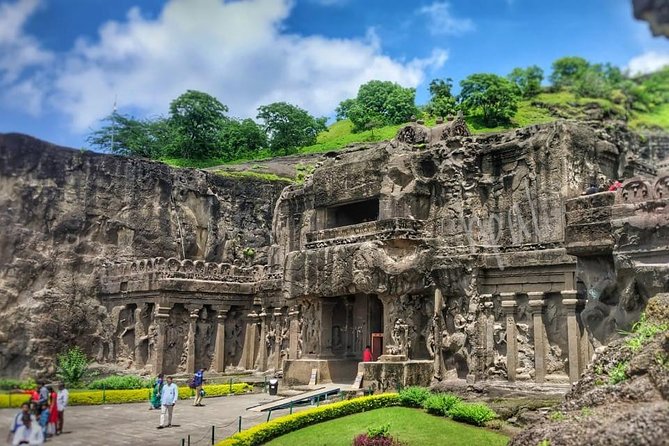Ajanta and Ellora: Nestled in the heart of Maharashtra, the Ajanta and Ellora Caves stand as a testament to the artistic and architectural brilliance of ancient India. Carved into the rock faces of the Deccan plateau, these UNESCO World Heritage Sites unfold the rich tapestry of religious, cultural, and artistic heritage. Let’s embark on a journey through time to explore the marvels of Ajanta and Ellora.
“Embark on a journey through time at Ajanta and Ellora, UNESCO World Heritage Sites nestled in the heart of Maharashtra, India. Marvel at the exquisite rock-cut caves adorned with ancient Buddhist, Hindu, and Jain sculptures and paintings, showcasing the rich cultural tapestry of India’s history. Immerse yourself in the architectural splendor and spiritual significance of these remarkable sites, where artistry meets spirituality. Plan your pilgrimage to Ajanta and Ellora and witness the awe-inspiring legacy of India’s ancient civilizations.”
Ajanta Caves: Ajanta and Ellora
The Ajanta Caves, dating back to the 2nd century BCE, are a series of 30 rock-cut caves adorned with intricate Buddhist art. Carved into a horseshoe-shaped gorge along the Waghora River, the caves served as monastic retreats for Buddhist monks. The murals and sculptures within the caves depict the life of Buddha, Jataka tales, and celestial beings, showcasing the evolution of Buddhist art over several centuries.
Architectural Splendor of Ajanta: Ajanta and Ellora
The architecture of Ajanta is characterized by intricately carved facades, ornate pillars, and exquisite sculptures. Cave 26, known as the Chaitya Griha, is a stunning example of a Buddhist prayer hall with a stupa. Cave 1, featuring the famous painting of the Bodhisattva Padmapani, is among the highlights of Ajanta’s artistic treasures.
Ellora Caves: Ajanta and Ellora
Unlike Ajanta, the Ellora Caves encompass not only Buddhist but also Hindu and Jain monuments, representing a harmonious synthesis of diverse religious traditions. Dating from the 5th to the 10th century CE, Ellora consists of 34 caves arranged in a crescent shape, showcasing the religious tolerance and cultural diversity of ancient India.
Kailasa Temple: Ellora’s Architectural Crown:
The Kailasa Temple in Ellora is a colossal monolithic structure dedicated to Lord Shiva. Carved from a single rock, the temple is a marvel of engineering and artistry. The intricate detailing on the walls, the massive sculptures, and the sheer scale of Kailasa Temple make it one of the most awe-inspiring creations in the world.
Varied Themes and Styles:
Ellora’s caves are organized into three groups – Buddhist, Hindu, and Jain – each reflecting the distinctive architectural and artistic styles of its respective faith. The Buddhist caves (1 to 12) showcase Vajrayana and Mahayana traditions, while the Hindu caves (13 to 29) predominantly feature Shaivism, Vaishnavism, and Shaktism. The Jain caves (30 to 34) celebrate the teachings of Lord Mahavira.
Diverse Artistic Expressions:
The artistic expressions within Ajanta and Ellora vary from the serene and sublime to the grand and majestic. The frescoes of Ajanta illustrate the sensitivity and grace of ancient Indian painting, while the Ellora sculptures, especially in the Hindu caves, exhibit dynamic energy and intricate detailing.
Cultural Significance and UNESCO Recognition:
Ajanta and Ellora Caves were recognized as UNESCO World Heritage Sites in 1983, acknowledging their cultural, historical, and artistic significance. These sites attract scholars, art enthusiasts, and tourists from around the world, offering a profound insight into India’s rich heritage and cultural evolution.
Preservation and Conservation Efforts:

Due to their age and exposure to the elements, Ajanta and Ellora face challenges of preservation. Conservation efforts, including monitoring environmental conditions, limiting visitor impact, and restoring damaged sections, are ongoing to ensure the longevity of these ancient marvels.
Conclusion:
Ajanta and Ellora Caves stand as a timeless testament to the artistic and spiritual brilliance of ancient India. Beyond being archaeological treasures, they serve as windows into the diverse cultural and religious traditions that shaped the subcontinent. As you explore the intricacies of the sculptures, marvel at the vibrant frescoes, and witness the grandeur of the monolithic Kailasa Temple, Ajanta and Ellora invite you to journey through the epochs of history and immerse yourself in the cultural mosaic of ancient India.

